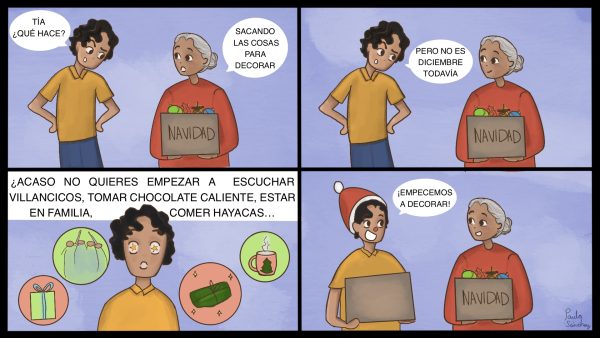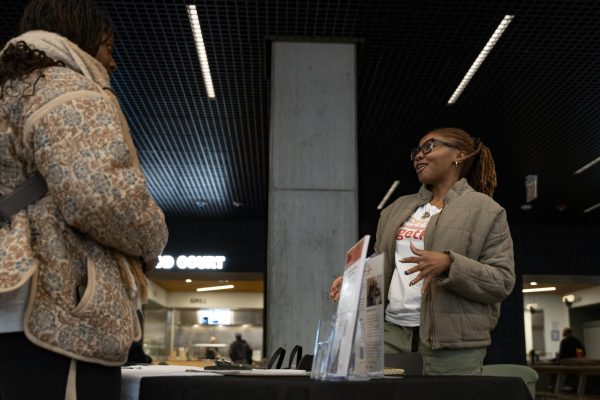Renegades aim to kick off hockey and softball teams
October 31, 2014
When Mike Sempek, a junior television major, became president of the Renegades in August, he had one goal in mind—to expand Columbia’s selection of sports.
The Renegades held meetings Oct. 21 at The Loft in the 916 S. Wabash Ave. Building to gauge student interest in creating softball and ice hockey teams. At the meetings, Sempek recruited captains to lead the prospective softball and hockey teams through the next steps of creation. Sempek said he was inspired to start the teams after speaking to students at events who played sports that do not exist at Columbia.
“For my job, it is required that I attempt to start two new organizations, and that quota would have been met already by our addition of Galahad and Quidditch,” Sempek said. “However, I wanted to take it further than that. I wanted to give those people a chance to play their sports.”
Alexis Knox, a sophomore advertising major, and Cassidy Lucas, a sophomore interactive arts & media major, volunteered to serve as captains for the softball team.
“We both love softball and played it in high school,” Knox said. “[I wanted to be captain because] I have a lot of free time and I feel like I should utilize it in some form.”
According to Lucas, students who enjoy sports at Columbia are often disappointed by the college’s lack of athletics. Lucas said she has received criticism for being an avid football fan at an art school.
“I feel like sports in general are underappreciated [at Columbia],” Lucas said. “[I want to give] those people who like sports a place where they can feel comfortable talking about sports without feeling shunned.”
Lucas said she thinks that creating a softball team could lead to an increased interest from students in Columbia’s athletics.
“I think a softball team would allow people to kind of see that yeah, these people are for all of these different majors and these different artistic things, but they can come together over this one athletic event and if we can get it running, our friends will want to come support us, and they will be interested in our sport and therefore, it will get a positive view by other students,” Lucas said.
The seven students who came out for the softball meeting showed a lot of enthusiasm in forming the team, Sempek said.
“I can see the passion out of everyone,” Sempek said. “They’ve all played before, they have their own stuff, and they love our school. What’s missing is their sport that they’ve grown up with their whole life.”
Eleven students attended the ice hockey meeting. Asher Kline, a freshman cinema art + science major, volunteered to lead the ice hockey team.
“As a long-time hockey player, I really felt I have the experience to lead a hockey team,” Kline said. “I’m also interested in taking on new responsibilities. Hockey has always been a passion in my life and I want to help others play one of my favorite sports.”
Creating a new team is no easy task for a captain. The captain must recruit a faculty or staff member to serve as a sponsor and submit a budget and a roster with at least 10 participants to the Renegades by Nov. 21 to receive recognition as a team, according to Sempek. The Renegades then work with the captains to find a league for the team to compete in. Leading a team is like owning a business, Sempek said.
“They run practices/rehearsals and they also handle a bunch of the paperwork,” Sempek said. “They have to contact opponents, schedule games, handle budgets, etc. I speak from over a year of experience— it is not easy. The most difficult part is getting your players to stay committed through their busy full-time college lives.”
In addition to drawing out student interest and securing commitments, several challenges face the prospective teams. Because Columbia does not have athletic facilities, teams must seek out alternative practice spaces by securing gym time or utilizing local parks, Sempek said. This presents a unique challenge for ice hockey, because there are few rinks in the city and renting ice time for practices can cost hundreds of dollars, according to Sempek.
Funding is an obstacle both teams would face. A team’s funding is determined by how competitive the team is and how far it travels. A team that does not travel for events receives $500; teams that play in city leagues receive $1,000, and teams that travel for competition receive $2,000.
Because funds are limited, players are often expected to supply their own gear, which can be costly for sports that require an abundance of equipment such as ice hockey. To compete in an ice hockey game, players must have skates, a stick, shoulder pads, shin guards, protective pants, elbow pads, a caged helmet and gloves.
Despite the challenges the prospective teams face, Sempek said he is committed to helping the captains in forming the teams, as well as getting more students involved.
“These interest meetings don’t mean the team is going to happen, but I’d love to see it happen,” Sempek said. “It’s hard to find people who play sports because there’s not a lot who exist, but I’m not going to stop. I’m going to keep trying to find people who are out there.”






